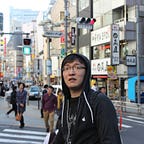〈採集〉Microsoft HoloLens 深層技術
採集前準備
HoloLens ,絕對是 Microsoft 近十年來最令人驚奇的作品。
擴增實境(Augmented Reality,簡稱AR)的發展在 mobile 上早已商業化很久,甚至早在2009年前(可能更早) Android 上就出現了 SDK 。
頭戴式的 AR 也不是未曾有過,在 Google Glass 的興衰年代,就曾經出現 AR 百家爭鳴的時期,所以如果要分析 HoloLens 特別的點,我就會想要瞭解它更深的技術門檻。
既然如此,我們就一起動手採集資訊吧。
採集過程
<撞牆期>(約 1.5小時)
- Google 搜尋「HoloLens」、「AR」
- Wikipedia 搜尋「Windows Holographic」、「AR」
- Hacker News 搜尋「HoloLens」。從 Comments 裡找有沒有網友分析它的技術。
<得到方向>(約 1 小時)
Google 搜尋「HoloLens Patent」。從微軟已經申請到的專利去觀察,最能瞭解產品的技術,以及未來的走向。
(採集筆記:這一種方法也適用在其他科技產品的分析。)
意外果實
[1] HoloLens 的設計者 Mike Ey 在今年三月,車禍身亡。
[2] Microsoft 買下 Minecraft ,正是為了 HoloLens 鋪路。
[3] 主要由 Google 所投資的 Magic Leap,去年募得 5 億美元的資金,但至今卻沒有任何實體產品,卻仍只有概念影片,底下評論吐嘲居多。
豐收
從 Google 搜尋關鍵字「HoloLens Patent」, 發現兩篇有用的資訊。
- Patents and What They Mean: Focus and Opacity (/r/HoloLens)
- All Hands On The Microsoft Holodeck: A Look At Some Of The Hololens Patents
這兩篇文章,大約 20 分鐘就能快速瀏覽一遍,如果要深入了解每個專利和關鍵,請準備至少 1~2 小時的時間,才能享受採集資訊的樂趣。
主要在第一篇 Reddit 的文章中,我們能得到最多關鍵。
第一個關鍵是「對焦」。
HoloLens 上採用的是穿透式螢幕,同時也是頭戴式顯示(Head Mounted Display,簡稱HMD <1>),一個頭戴式的 AR 要顯示立體的虛擬影像在我們眼前時,並不是像一般的 LCD 平面顯示那樣簡單,如果要讓人覺得虛擬影像是立體的,必須要先騙過人類的眼睛和大腦,而人類眼睛的構造和原理 <2>,其實是一個不斷變焦的透鏡,眼睛其實在對焦的過程中,讓大腦去理解人和物體的距離。
Microsoft 現有的專利中,特別注重偵測眼睛的對焦,並且不斷的調節影像的清晰度和距離,去騙過人的大腦,讓我們覺得虛擬物體是真實地存在那。
At issue here is the way that the human brain controls the focus of the eye. In sum, the brain is antagonistic to plural background subjects in a scene. Instead of establishing a different focus for background subjects arranged at different depths, the brain will try to use a common focus for all background imagery. Thus, if the wearer of a head-mounted display system is viewing a virtual display image focused at infinity, and facing a wall five meters away, the display image would appear to float in front of the wall; the wall and the display image would both be resolved without a change in focus of the wearer’s eye. If the wearer then places a hand in front of his or her face, resolving the hand would induce a change in focus, and when the hand is in focus, the wall and the virtual display image would appear blurred.
- Sympathetic optic adaptation for see-through display
US 20120147038 A1
在這個專利的基礎上,Microsoft HoloLens 上的確能偵測兩個眼睛所注視的物體 <3>,但實際上的技術是如何達到,目前我們不得而知。
第二個關鍵是「清晰 和 不透明」。
一個非常靠近眼睛的穿透式螢幕,要如何顯示一個較暗的物體?
A portion of the real-world scene which is behind the augmented reality image, from a perspective of the user’s eye, is blocked by the opacity filter from reaching the user’s eye, so that the augmented reality image appears clearly to the user. The augmented reality image may be considered to provide a primary display, while the opacity filter provides a secondary display. The intensity and/or color of the secondary display can be driven to closely match the imagery on the primary display, enhancing the ability of the primary display to resemble natural light.
- Opacity filter for see-through head mounted display US 20120147038 A1
這專利的解決方法,是用第二個可調節透光的電子濾鏡(或螢幕),去調節光線亮暗。
要顯示的影像呈現在第一個主螢幕上,較靠近眼球,第二個螢幕則在第一個主螢幕與環境背景間,能控制不同光線的進出,甚至能讓物體顯示陰影,立體的顯示能更逼真。
以上是我採集到此,所走過的路徑和時間紀錄。
至於第二篇文章主要強調在 HoloLens 的情境專利,就不屬於技術的範疇,有興趣的朋友歡迎自行採集。
更多果實
<1> 不同 HMD 顯示方法的介紹(約 10 分鐘閱讀,需要具備光學常識)
<2> 關於人類眼睛的構造(約 5 分鐘閱讀重點:對焦 focus)
<3> 首席設計師 Alex Kipman 在專訪時提到(在 2:38 處開始)
意外果實
若內容上有任何錯誤,或任何自行採集得來的資訊想要分享
歡迎寫在下面的 Response 或右側的 Note
